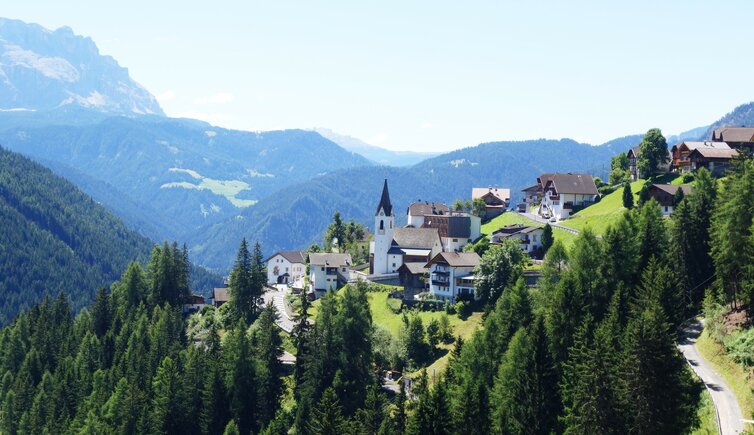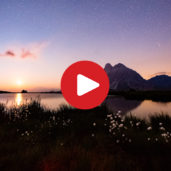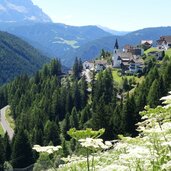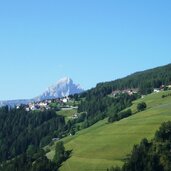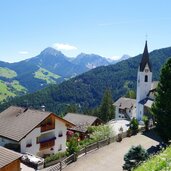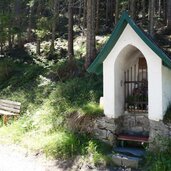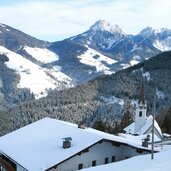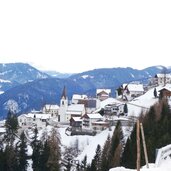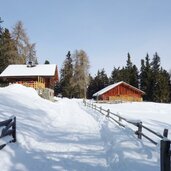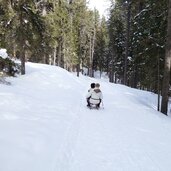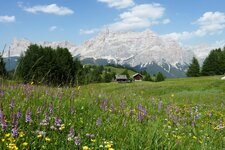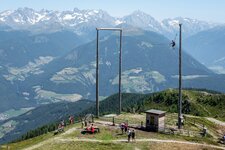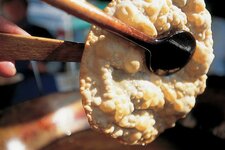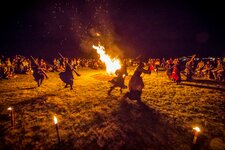Rina lies at the foot of the Dolomite landscape defined by Mt. Col dla Vedla, Mt. Sass de Pütia and the Passo delle Erbe
The small mountain village of Welschellen - its German name - is known as Rina in both Ladin and Italian. It was an independent municipality until the 1920s and is now a hamlet of Marebbe.
However, Rina has preserved its historical structure as a mountain hamlet: All the main buildings are grouped around the 14th-century village church. Above the village lies the Munt da Rina, the Rina alpine pasture. This small mountain hut, at almost 2,000 metres above sea level, is surrounded by Swiss pine forests and mountain meadows and is open in both summer and winter.
It is a rewarding destination, whether you are on foot, on a bike, or exploring with snowshoes or touring skis. For refreshment, you can find homemade Schlutzkrapfen, deer goulash and traditional "Tirtlan". From up here, the view extends to the impressive Sasso della Croce in the Fanes Group. Its proximity to the Passo delle Erbe, a Dolomite pass, invites you to a special summer experience: the Witches' Dance at the Passo delle Erbe during the full moon in July.
This is when farming legends are told, music is played and the witches' fires blaze. Other destinations such as Mt. Plan de Corones - Kronplatz, in German - with its Skyscraper swing and the mountain museums are also easily accessible from the hamlet of Rina. A side note: In 1889, Father Josef Dasser founded South Tyrol's first Raiffeisenkasse, a cooperative bank, here in Rina.
